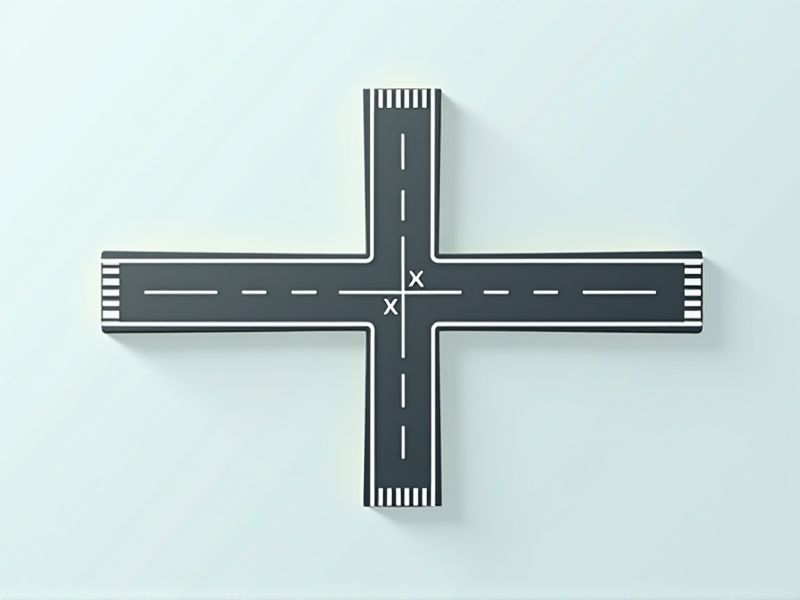
The standard width of a road lane varies depending on the country and the type of road, but generally, lanes are about 3.5 meters (12 feet) wide on highways or major roads. For local or residential streets, the width may be reduced to about 2.7 to 3.0 meters (9 to 10 feet) to accommodate lower speeds and less traffic. These dimensions are chosen to balance safety, traffic flow, and available space, ensuring vehicles have enough room to operate without excessive road widening. It's important to check local regulations, as some municipalities may have specific standards based on traffic volume or vehicle types.
Width For Different Types Of Lanes
The standard width for a typical automobile lane is 12 feet (3.7 meters), providing adequate space for safe vehicle movement. For bicycle lanes, the width can range from 4 to 6 feet (1.2 to 1.8 meters), ensuring cyclists have a dedicated space that promotes safety. In urban settings, parking lanes usually measure 7 to 8 feet (2.1 to 2.4 meters) to accommodate vehicle parking without obstructing traffic. When designing multi-use paths, a width of 10 to 14 feet (3 to 4.3 meters) is recommended to facilitate both pedestrian and bicycle traffic efficiently.
Shoulder Width Requirements
Shoulder width requirements for road lanes vary significantly based on the type of road and traffic volume. For highways, a minimum shoulder width of 2 to 3 meters is typically recommended to enhance safety and accommodate emergencies. In urban areas, the standard can be narrower, often around 1.5 meters, depending on pedestrian and bicycle traffic. Ensuring adequate shoulder width not only improves vehicle safety but also provides space for breakdowns and emergency services, ultimately reducing accident rates by up to 30%.
Bicycle Lane Specifications
Bicycle lane specifications are critical for ensuring safety and efficiency on roads, with a minimum width of 5 feet recommended for one-way lanes. It's advised to have at least 1 foot of buffer space between the bicycle lane and vehicle traffic to enhance rider safety. The ideal surface for bicycle lanes is smooth, durable asphalt, which can withstand various weather conditions while minimizing maintenance. Proper signage, including clear markings and traffic signals designed specifically for cyclists, is essential for providing guidance and promoting awareness among all roadway users.
Sidewalk Regulations
Sidewalk regulations typically mandate a minimum width of 4 to 6 feet for pedestrian pathways, ensuring accessibility for all users. Compliance with the Americans with Disabilities Act (ADA) is crucial, requiring curb ramps and smooth surfaces with no more than 2% cross slope. Local ordinances may also specify conditions for sidewalk maintenance, including a regular inspection schedule every 6 to 12 months. Proper signage and lighting along sidewalks can enhance pedestrian safety, reducing accidents by up to 30%.
Right-Of-Way Dimensions
The standard right-of-way dimensions for road lanes typically range from 12 to 14 feet wide for most highways, ensuring adequate space for vehicles and safe navigation. For urban streets, the widths may vary from 10 to 12 feet, accommodating diverse traffic patterns and pedestrian access. Your local jurisdiction may specify additional requirements based on traffic volume and road classifications, with lane markings providing clear guidance for motorists. Compliance with these standards enhances safety and efficiency, contributing to better overall traffic flow.
Multi-Lane Highway Guidelines
Multi-lane highways typically consist of at least four lanes, which can accommodate various vehicle types and promote efficient traffic flow. The recommended lane width ranges from 11 to 12 feet, providing ample space for larger vehicles. In urban areas, lane separation can be enhanced by using painted markings or physical barriers, which improve safety at speeds exceeding 55 miles per hour. Adhering to the guidelines ensures optimal road performance and minimizes congestion, ultimately facilitating smoother transit for all users.
Roadway Median Specifications
Roadway median specifications play a crucial role in enhancing safety and traffic flow, with standard lane widths typically ranging from 10 to 12 feet. A well-designed median can vary in width from 4 to 12 feet, depending on the roadway classification and expected traffic volume, ensuring adequate separation between opposing traffic flows. The materials used for median construction, such as concrete, asphalt, or landscaping, must meet specific durability and aesthetic standards to withstand environmental conditions. Compliance with the Manual on Uniform Traffic Control Devices (MUTCD) is essential for effectiveness, promoting consistent signage and markings that guide drivers effectively through the roadway.
Turning Radius Specifications
Turning radius specifications are crucial for road lane design, impacting vehicle maneuverability and safety. Typically, the minimum turning radius for a passenger car is around 25 to 30 feet, while larger trucks may require up to 50 feet or more. Road standards dictate that curves should be designed with a centerline radius that accommodates various vehicle types to ensure smooth transitions. Adhering to these specifications helps reduce the risk of accidents and enhances overall traffic flow on roadways.
Pedestrian Crossing Dimensions
Pedestrian crossing dimensions typically range from 8 to 12 feet in width, ensuring easy access for individuals of all mobility levels. These crossings often feature a minimum clear height of 7 feet, allowing for unhindered passage for taller pedestrians or those using mobility aids. Incorporating tactile paving within these dimensions enhances safety by providing sensory cues, crucial for visually impaired individuals. Ensuring compliance with local regulations and design standards enhances pedestrian safety and promotes a more walkable community.
Intersection Lane Widths
The standard lane width for road intersections generally ranges from 10 to 12 feet, allowing sufficient space for vehicles to maneuver safely. Wider lanes can improve traffic flow but may also increase vehicle speeds, impacting safety. It is essential to consider the volume of traffic; for instance, intersections with high pedestrian activity may benefit from narrower lanes to slow down vehicles. Ensuring proper signage and markings is vital, as it enhances driver awareness and improves overall intersection safety.
